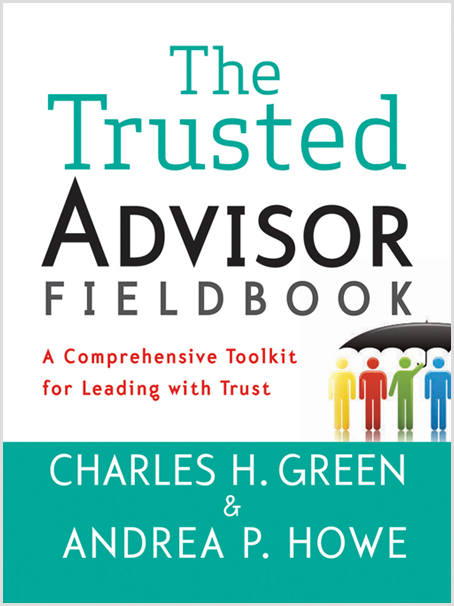This post is part of our Weekly Tips series.
I was leading a working session for an account team the other week. A question came up that often does when consultants are struggling with a particularly challenging client: Does an aspiring trusted advisor ever walk away from a client relationship? I thought I had a pretty good answer. Then someone in the group chimed in with an even better one.
My answer in a nutshell was, yes, sometimes the most trustworthy thing to do is walk away. But only after three things:
- You’ve made every attempt possible to address the relationship issue directly. I use the words “relationship issue” and “directly” very intentionally. It’s all too easy to focus on problem-solving a work issue when the source of the problem isn’t the work but the relationship. It’s also common to be indirect about relationship stuff. Who wants to deal with, “Honey, we need to talk” at the office? We get enough of that at home.
- You’ve consulted with your own trusted advisor(s). You’ve sought perspective to be sure you’re not giving up prematurely and/or avoiding the real issue.
- You’ve then tried one more thing. It’s too easy to give up when relationship stuff gets hard. And if you’re in a close relationship with a client, it’s likely to get hard at some point. (As my wise co-author Charlie Green says, there’s nothing like a close relationship to invite your own bad behavior to appear.)
[Tweet “Sometimes the most trustworthy thing to do is walk away from a client #relationship. But only after three things: #getreal”]I then suggested that, should you decide that walking away is the best option, it’s a trustworthy practice to have a candid conversation with your client about exactly that—in other words, let them know you’re throwing in the towel. That’s when one of the leaders in the room chimed in with a beautiful bit of wisdom, which he attributed to a mentor: Rather than announcing to the client that you’re giving up, ask, “Should we break up?”
I love at least two things about that:
- It’s a question, not a statement or a decree. It promotes dialogue. It helps the client think about his or her answer: yes, no, or maybe. It opens up possibility in the process. It gives the relationship one more chance.
- It brings a little levity. The “break up” language references a more personal context, and it’s humorous as a result.
Breaking up is hard to do, personally and professionally. In either case, how you do it says as much (or more) about you as the ways you show up the rest of the time.
Make It Real
This week, reflect on your more challenging client relationships. Think about the times you either threw in the towel, or didn’t and should have. What do you see about how you might have handled the situation in a more trustworthy way?
Learn More

Read about people behaving badly and how you can raise trust in your organization, or brush up on what to do when your client is a jerk in Chapter 24 of The Trusted Advisor Fieldbook.
Andrea Howe
Latest posts by Andrea Howe (see all)
- Why choosing silence in the face of awkwardness can be a trust tragedy - March 21, 2024
- What NOT to do when you think you’re being ghosted - February 21, 2024
- Reprise: If you’ve resolved to have better client relationships this year, great, now ditch your resolution - January 2, 2024
